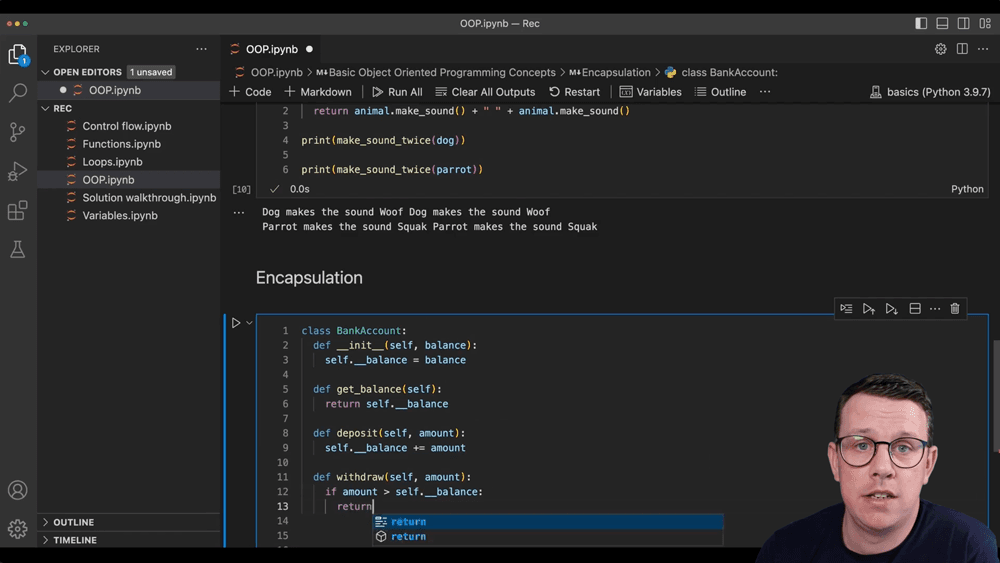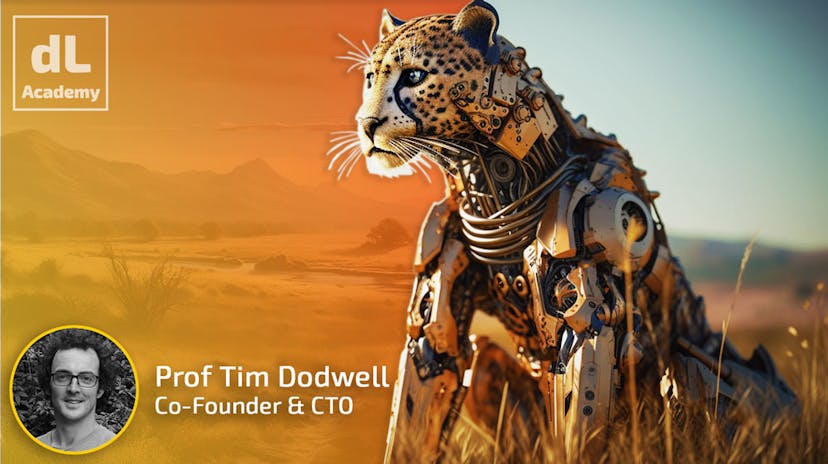- Have a working local development environment suitable for data science and machine learning workflows.
- Have gained a solid understanding of Python programming fundamentals.
- Understand how to use NumPy and Pandas, two of the most commonly used data handling libraries.
- Have gained an understanding of basic data visualisation methods using matplotlib, another one of Python’s most popular libraries.
In this course, our aim is not to teach you machine learning but to get you ready to dive into it with the rest of digiLab team. After completing this course, you should be ready to start working through the machine learning-focused courses inside the digiLab Academy.
You can think of what we cover in this course as preliminary material to help you get set up.
So, we’ll cover:
- some general tips on how to get the most from a digiLab Academy course
- what you need to download and how to get your coding environment setup
- how to get support from your course tutor and other students
- a basic introduction to Python
We‘ll work on the basis that you’re new to Python. So don’t worry if you’ve never coded in Python before - we’ll cover the basics. The rest you’ll pick up along the way as you move through the other courses. If you’re already comfortable programming in Python, you can probably skip this course and jump straight into the next course with Tim.
Section 1: Wait...this isn't Machine Learning.
In the first section of the course, we’ll cover some housekeeping issues as well as some study tips to help you get the most from your courses. Probably the most important thing we’ll cover in this section is how to get support using the digiLab Academy Community forum.
This is the main avenue for seeking additional support as you move through your course. The forum allows you to get support from your peers as well as the course instructors. Feel free to offer support to other students when you can.

Fig 1. The digiLab Academy community forum.
Section 2: Coding Environment Setup.
In section 2, our goal is to get your local development environent setup. We’ll cover how to install Python and some of the the libraries we’ll be using in this course. We’ll also cover how to install VS Code, our code editor of choice, and how to use it to write and run Python code.
Again, if you already comfortable working with Python you can skip section 2. Equally, if VS Code isn't your cup of tea, you can use any other code editor you like.
Section 3: Python 101 - The (very) Basics.
We don’t want coding to be the reason someone doesn’t explore the world of data science. So in this section, we’re taking nothing for granted - we’ll assume you’re completely new to programming. We’ll start by covering very simple programming concepts.
We could devote a whole course to learning programming and Python concepts, but frankly, the best way to learn is simply by doing. So, we cover the bare essentials and keep moving - you’ll be surprised at just how much you can accomplish with only a few programming tools under your belt!
🚧 Section 4 - Under Construction: Numpy (numerical python) and Working with Array.
In section 4, we’ll get familiar with Numpy - the Swiss Army knife of Python. NumPy is probably one of the most used libraries in the language. It basically gives us a whole range of tools to make working with arrays (for now, think of these are a list of variables) much easier.
We’ll typically use arrays to store lists of variables. We’ll need to add items, remove items and filter for items. Without Numpy’s tools (methods), this would be a lot more tedious.
🚧 Section 5 - Under Construction: Pandas for Tabular (or panel) Data.
Section 5 brings us to Pandas. You can think of Pandas as NumPy’s bigger brother. In the world of data science, Pandas is an essential tool. Its main utility is that it allows us to manipulate large data sets very quickly and efficiently. It’s particularly well suited to rectangular data sets - so datasets made up of rows and columns.
Pandas is a huge library - we’ll only scratch the surface so that you’re not totally confused when you come upon it later. It’s a library that you’ll only fully learn to appreciate after using it for a while.
🚧 Section 6 - Under Construction: Visualisation Basics with Matplotlib.
Finally, in section 6, we’ll turn our attention to data visualisation. No introduction to Python would be complete without covering Matplotlib - like the other libraries covered in this course - it’s a big one. It’s probably the most widely used data-viz library for Python.
We’ll work our way through a number of relatively simple data visualisations so that you have enough knowledge to independently build your own data visualisations in the future.
We’ll also take a brief look at how to add interactivity to your visualisations with widgets. These are great for helping you quickly explore your data through visualisation.
🤖 Use AI to help you learn!
All digiLab Academy subscribers have access to an embedded AI tutor! This is great for...
- Helping to clarify concepts and ideas that you don't fully understand after completing a lesson.
- Explaining the code and algorithms covered during a lesson in more detail.
- Generating additional examples of whatever is covered in a lesson.
- Getting immediate feedback and support around the clock...when your course tutor is asleep!


